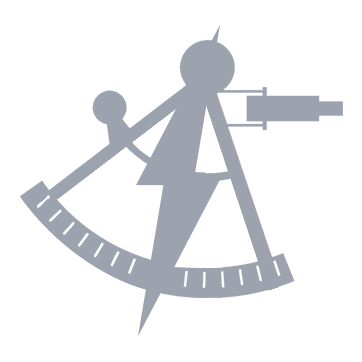Summary
Lieutenant Commander Tristan Hawthorne is the chief science officer aboard the starship Achilles. Trained as a linguistic anthropologist, Hawthorne’s skillset includes linguistic and cultural studies, biology, and general analysis, which he has put to great use in a short but distinguished career as a starship science officer. His introverted personality often manifests as a haughty and aloof demeanor, as he prefers to keep his shields up in most social settings. Hawthorne enjoyed his role on the Arcturus deeply, but set sights set on becoming a chief science officer, finally earning that job aboard the Arondight in 2401. Though he has contributed to many important missions over the years, Hawthorne prefers to stay in the background and gets uncomfortable in the limelight, so the move into being a senior officer is an adjustment.
Appearance
Hawthorne is tall but not towering at 1.82 meters and has a lithe, athletic build of 77 kilograms. He is classically handsome, with carved cheekbones, thick, golden hair that always remains immaculate, and deep blue eyes, all of which project an aura of dignity and distinction in anything he does. Though he has a radiant smile, he is sparing with its use, often only laughing when caught unawares. He maintains a regular fitness routine, preferring yoga and running rather than the weight room. Even when off duty, Hawthorne prefers the sartorial comfort of his uniform: it’s hard to look out of place if you’re wearing what everyone else is. He is always clean-shaven and is fair-skinned.
Personality
Tristan Hawthorne makes it nearly a matter of policy to be taciturn if not completely silent except when directly asked for a contribution or when providing a report. He simply does not do small talk, not because he doesn’t grasp the concept or even lacks interest in his shipmates, but because he is intensely private about his own thoughts and feelings. This gives him a well-deserved reputation for being aloof, but it also comes with the perception that he also has a superiority complex, which he does not. Indeed, much of his shyness stems from his own deep insecurity about his talents, and a sense of imposter syndrome that’s never left him.
Hawthorne does have a select group of close friends that he allows into his life, and they know him as erudite, charming, and genuinely compassionate. In that sense, his affections are almost feline—highly selective and often quite capricious from person to person. The only person with whom he has an actively negative relationship on the ship is Lieutenant Paulo Costa, who came up in the same Starfleet Academy class as he did and who he has had repeated near-disastrous mission assignments over the years. He reserves his sharpest wit and deepest well of sarcasm for his fellow lieutenant. Hawthorne has dated in the past, but his priorities are firmly on his career and he is anxious about making any professional relationships award by complicating them with sex or love; he identifies as gay.
In the next few years, Hawthorne hopes to either become a bridge officer or complete the coursework and research necessary to earn a doctorate in his field, for a potential research station assignment or teaching post back on Earth. Despite this medium-term goal, Hawthorne is content in his current role in life.
History
Childhood
Tristan Montgomery Ranier-Hawthorne was born the second son of Montgomery Hawthorne and Elsa Ranier in London on Earth on Christmas Day in 2372. The Hawthornes and the Raniers were both Anglo-French families that had lineages that (purportedly) could be traced all the way back to the days of Charlemagne, and Tristan’s parents were both high in the United Earth and Federation social and diplomatic circles centered on London and Paris. His earliest memories are etiquette lessons and he was pressured from the beginning of his existence into being perfect, pleasant, and silent at all times. A quiet but curious child, Tristan spent a lot of time reading as soon as he knew how, and was fascinated by the huge number of different races and people he got to meet tangentially at functions his parents hosted.
When he wasn’t being used as a prop at diplomatic functions, Tristan was more or less left to his own devices. Before he formally started school, he had advanced skills at the piano and had working proficiency in Latin. At grammar school, he had a deeply classical education, continuing into studies at Eton, where he learned Greek, French, and Vulcan under the tutelage of a brilliant but harsh Vulcan linguist, Sten. Despite the pressure, Tristan actually liked the challenging nature of his academics.
What he did not like, though, was the shallowness with which his parents treated him or the social circles they ran in. While hereditary nobility had long been abolished, nearly everyone the Raniers or the Hawthornes knew had some claim or another to ducal or comital status—and indeed, the Raniers themselves were descended from a branch that had settled the original Hysperian colony but who had relocated back to Earth and in theory still had princely rank. It led to a lot of meaningless, vapid conversations entirely detached from any action or reality.
Tristan found his childhood to be suffocating, other than for his friendship with his older brother, George, who was doted upon by their parents. By the time he was old enough to understand etymology, Tristan wondered if his name originated in his parents’ sadness at raising a second child. It was George who encouraged Tristan to think about ways he could get out of their situation, but it was Tristan’s linguistics instructor who pointed him towards Eton’s Starfleet Academy Preparatory Program. While he was expecting resistance, his parents were delighted that he had designs on something so prestigious as SAPP and gave him their blessing.
Though he was certifiably a genius, Tristan had avoided most sports where he could. SAPP hit him like a metric ton of bricks, and he nearly washed out on the physical exercises until his parents found a private athletic trainer—one of their friends’ over-indulged, incredibly-spoiled athletic sons, just a few years older than Tristan was. This had the double benefit of getting him through the physical requirements of the SAPP program and of confirming once and for all for Tristan that he was gay. Thankfully, Tristan was already half-way around the planet at Starfleet Academy before that particular scandal broke.
Starfleet Academy
Cadet Tristan Hawthorne joined Starfleet Academy in 2391. While he knew that he wished to study science—especially something to do with cultures—it wasn’t until his third semester that he formally declared his double major in xenolinguistics and xenoanthropology. These were both rigorous sequences, but they had several shared courses, and Hawthorne relished the challenge. He also enjoyed the prestige that came with taking two majors, but he wouldn’t admit that to his peers. Hawthorne was incredibly focused on his studies, to the point that he spent more time in the library than in his dormitory. He made few friends until he began to see the same people in the more advanced classes from term to term, which allowed mutually beneficial “study buddy” relationships to evolve into friendships.
To that point, Hawthorne had never truly had real friends, something he didn’t understand until he had a frame of reference to compare the shallow interactions he’d had with his parents’ friends’ children over the years. Opening up more in his social life made Hawthorne feel more like he belonged at Starfleet Academy, which in turn made his academic skills even stronger. Because of his high academic performance, Hawthorne was selected to join Cadet Squadron Bravo, the elite training unit for the Fourth Fleet. Hawthorne jumped at the opportunity to leave Earth, and found himself joining the Mellstoxx campus of Starfleet Academy in 2393.
This was the first time that Hawthorne met Cadet Paulo Costa, who had also transferred from Earth, but since they had been in no shared classes, they had never met. It was right before the inspection, and Hawthorne was struck by just how staggeringly beautiful he found Costa to be. He was bantering with some of their classmates, with an instant air of charm and bravado. Hawthorne found himself sucked back in time to the shallowness and entitlement he had seen in London, then noticed that Costa’s boots were severely scuffed—likely from going somewhere he wasn’t supposed to be. He felt it in the pit of his stomach that Costa would get away with that, while no one else would. It wasn’t fair.
Hawthorne reported Costa’s state of undress immediately to their squadron commander. As expected, Costa was sent for laps around the parade ground—but Hawthorne was shocked to learn that he would share in that punishment for not being collegial. Being technically correct was not, in fact, the same thing as being right. Twenty laps around the field took forever, but Hawthorne could at least be proud that he kept pace with a hunk like Costa. At the conclusion, Hawthorne was soaked in sweat and shame, feeling as though he had made a profound lapse in judgment on a boyish whim. Through halting breaths, Hawthorne tried to apologize but only got to “I am…,” before Costa spat out “a blond British pendejo,” before storming off.
Their relationship would not be salvaged while at the Academy, but the two seemed to always be paired for group work and other assignments, likely as a punishment for their initial disagreement. It made them become extremely competitive with one another, which led Hawthorne to focus much more on his athletics to try to keep up with Costa, while Costa seemed to actually be getting smarter by the day. Hawthorne tried on a few occasions to apologize, but he never managed to get the words out, always because Costa flung some insult at him.
Hawthorne (and Costa) served out their midshipmen cruises aboard the Academy’s training ship, Exeter, where Hawthorne was able to serve on the bridge as cadet chief science officer. He (and Costa) graduated in the top 10% of their Academy class and were promoted to Ensign in 2395.
USS Arcturus (2395—2397)
Following his graduation, Ensign Hawthorne was posted to Starbase Bravo for a few months in the science department before joining several of his classmates aboard the Ambassador-class exploratory cruiser Arcturus. He was posted to the Social Sciences division as a generalist, helping with projects related to linguistics, anthropology, sociology, archaeology, and everything in between. Social sciences departments on starships tended to be small and had the fewest lab facilities, as much of their work only needed a desk and chair to accomplish. This led Hawthorne to develop lasting connections with the other social scientists on the Arcturus, but the ship was most often given stellar or planetary surveys, so he also developed experience outside of his training. More often than not, Hawthorne found himself as a glorified yeoman, handling tasks no one else wanted.
In particular, Hawthorne’s first shuttle mission came in a courier run from the Arcturus to Starbase Bravo with a container of terraforming emulsion that needed to be monitored and contained until it could be secured at the starbase, while Hawthorne’s colleagues dug into the archaeology of the centuries-old cache that contained it. As fate would have it, the pilot assigned to the shuttle was none other than Ensign Paulo Costa. The trip itself was stone-quiet, which Hawthorne preferred to bickering, but it made his heart ache that he’d been the one to cause their rift and he couldn’t seem to fix it.
Less than a day away from the station, an ion storm struck the shuttle at the edge of the Paulson Nebula. The sample container was damaged, despite the power systems remaining intact. Hawthorne managed to seal the aft compartment of the shuttle and flood it with parizene gas and low-level radiation to keep the terraforming emulsion from transforming their shuttle into a planet. Meanwhile, Costa managed to stabilize the shuttle, and they worked together to repair their systems well enough to get to Starbase Bravo, developing a begrudging respect for one another along the way.
With a new shuttle to replace the damaged one, they returned to Arcturus where second officer Alesser had been delegated to debrief them. Begrudging respect turned immediately into a finger-pointing contest, despite the fact that neither of them were actually at fault. Alesser entered a note of commendation into each of their files, along with a note that questioned their ability to play well with others.
Arcturus was an aging relic, but as his first starship posting, Hawthorne still found it sad when she was decommissioned in 2397 to make way for a newer, larger Odyssey-class Arcturus, which was already well under construction.
USS Opportunity (2397—2399)
By 2397, Commodore Elizabeth Hayden had already been selected to command the new Arcturus and lead her squadron to the Delta Quadrant, though she was still in command of the Obena-class explorer Opportunity. A significant portion of the old Arcturus‘s crew was transferred to the Opportunity, so that Hayden could assemble the crew she would eventually take with her to her new command. Hawthorne joined the Opportunity as Head of Linguistics, leading a small but well-equipped linguistics section under the social sciences department.
Hawthorne admired Commodore Hayden, and held deep respect for the way she had managed to reach the top of her field in botany, then become a respected starship science officer, before transferring into the command division and then working her way to flag rank as a veteran starship commander and diplomat. Most people could only hope to have one of those milestones in her career, but she could seemingly do it all.
Sad as he was to leave his first ship, the facilities aboard Opportunity were dramatically superior to those on his previous posting. Opportunity was also a diplomatic ship, assigned to many missions where Hawthorne had the chance not only to practice his linguistics talents but to interact directly with Commodore Hayden. As a reward for successful contributions to a negotiation, Hayden had Hawthorne assigned to one of the survey teams during their next mission to the Zeta Asteropes system, which was being considered for either a Federation colony or a Starfleet scientific outpost.
Expecting nothing else, Hawthorne found himself on Paulo Costa’s team; Costa was nominally in command, while Hawthorne was the senior science officer. Thanks to the intense radiation belts created by the magnetic field of the gas giant, they had to shuttle down to the surface. There was little remarkable in terms of flora or fauna on the rocky outcropping, but they did discover an interesting cave system. Hawthorne saw readings on his tricorder that he was sure were signs of sentient life. Before he could perform further analysis, Costa eagerly pulled him by the hand into the cave. Hawthorne objected strenuously, and while they were squabbling, they slipped down a shaft in the rock. It was a 50-meter near-vertical drop to a chamber far beneath the surface. If it weren’t for a thick bed of bioluminescent fungus, they would have been crippled, but they landed with a bounce.
Hawthorne was mortified that he had misunderstood what his tricorder had been telling him; he thought that the complex hydrocarbons he had found were a sure sign of advanced life, but it turned out to just be run-of-the-mill fungus. He attempted to apologize, but Costa waved him off and had him focus on using their phasers to carve steps into the shaft so they could return to the surface. He couldn’t help but admit to himself that Costa really was as talented as his bravado implied, but he was still short-sighted.
They emerged from the cave to find a full security detachment led by the ship’s impressive and irascible first officer, Commander Michael Lancaster, who dressed them down in public and on the beach before sending them back to the ship to think about their life choices. Fortunately, Lancaster transferred off of the Opportunity a few months later for a posting on Earth.
After being mistaken about those readings, Hawthorne devoted substantial amounts of his free time to studying biology, physics, and other areas outside of his linguistic anthropology training, endeavouring to be as competitive as possible for chief science officer positions. He did everything he could to excel, and was pleasantly surprised when he was selected to join the crew of the new Arcturus in 2399.
USS Arcturus (2399—Present)
As a full lieutenant, Hawthorne joined the 2,500-strong crew of the Arcturus in 2399, now as Deputy Head of Social Sciences, where he helped oversee a department of thirty. He later learned that he was selected personally by Commodore Hayden.
Under Hayden and later Captain Lancaster, Hawthorne has served with distinction aboard Arcturus, though most often in the background.
Service Record
| Date | Position | Posting | Rank |
|---|---|---|---|
| 2391 - 2393 | Xenolinguistics & Xenoanthropology Student | Starfleet Academy, San Francisco |
 Cadet Cadet |
| 2393 - 2395 | Xenolinguistics & Xenoanthropology Student | Starfleet Academy, Mellstoxx III |
 Cadet Cadet |
| 2395 - 2397 | Social Sciences Officer |
USS Arcturus (NCC-49801) Ambassador-class exploratory cruiser |
 Ensign Ensign |
| 2397 - 2399 | Head of Linguistics |
USS Opportunity (NCC-83012) Obena-class explorer</small< |
 Lieutenant Junior Grade Lieutenant Junior Grade |
| 2399 - 2401 | Deputy Head of Social Sciences |
USS Arcturus (NCC-84000) Odyssey-class heavy explorer |
 Lieutenant Lieutenant |
| 2401 - Present | Chief Science Officer |
USS Arondight (NCC-86407) Reliant-class frigate |
 Lieutenant Commander Lieutenant Commander |

 Bravo Fleet
Bravo Fleet






